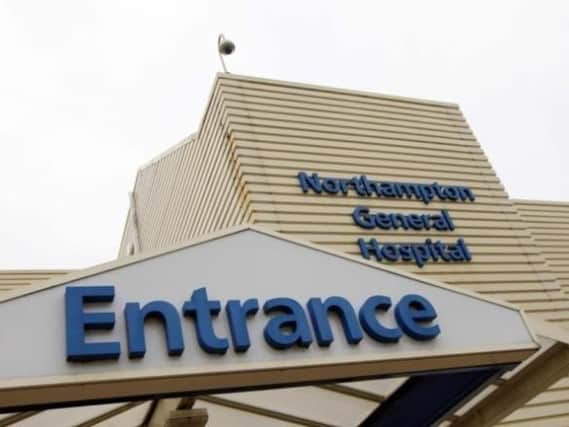Northampton General denies Guardian claim hospital 'could be overwhelmed by second wave in winter'


Northampton General Hospital has been named on a list of trusts that "could be overwhelmed" by a second wave of coronavirus during winter, according to a study by The Guardian.
The national newspaper reported yesterday (September 7) a claim that the hospital would be 11 per cent over full capacity if it faced a Covid-19 outbreak on the scale of what it faced in April and May during the seasonal pressures it faced last winter.
Advertisement
Hide AdAdvertisement
Hide AdThe Guardian claimed that 99 per cent of the hospital's beds were full during winter pressures during 2019/2020. Coupled with how the hospital needed 90 beds for Covid-19 patients in both April and May, if it faced a similar outbreak during such a winter it would not be able to give any more beds to patients.
Now, NGH has claimed it is taking steps to prepare for winter with Covid measures in place.
A spokeswoman for the hospital said: "The data presented does not take into account the measures put into place by the hospital, to help us to manage the demand during the COVID pandemic, or changes in our bed capacity.
"We are planning our winter capacity carefully to ensure that we have enough beds to treat those who need us. This includes creating additional bed capacity which we will be able to open as and when it’s needed throughout winter."
Advertisement
Hide AdAdvertisement
Hide AdIn January 2020, NGH's A&E was faced with up to 400 patients a day during the busiest winter on record for the hospital.
The hospital has been faced with extreme winter pressures for several years running, and faced overcrowding in both 2018 and 2019.
One day in 2018 saw 450 people attend the emergency department compared to 300 the previous year.
It comes after the hospital completed a 60-bed emergency assessment using in 2018 to alleviate pressure.
Advertisement
Hide AdAdvertisement
Hide AdThe hospital was also allocated £2.9m in Government funding in August for a plan to create a new designated paediatric A&E facility.
Meanwhile, the hospital has also received £1.6bn in funding in 2018/19 and £145m in capital funding in 2019 to tackle waiting times, as well as enacting the NHS Long Term Plan in January 2019.
The spokeswoman said: "We have worked with the independent sector and our system partners in health and social care to support with our bed capacity during [the Covid-19 crisis]. This has enabled us to provide more enhanced care closer to home for our patients, and support them to return home or to a place of care as soon as they are medically able to.
"If another peak is experienced we would repeat the same processes to lower bed occupancy and provide sufficient capacity. We always work closely with system partners during the winter months and we will continue to do this during this winter.
Advertisement
Hide AdAdvertisement
Hide Ad"We are also supporting patients to go home as soon as they are medically able to. As part of this work we have opened a new frailty unit in the hospital which is specially adapted to provide assessment and treatment through holistic care. This unit will support frail patients who need same day emergency care or who have a predicted length of stay of 72 hours. This means we are able to reduce hospital admissions meaning our patients can return home as soon as possible.’
Comment Guidelines
National World encourages reader discussion on our stories. User feedback, insights and back-and-forth exchanges add a rich layer of context to reporting. Please review our Community Guidelines before commenting.